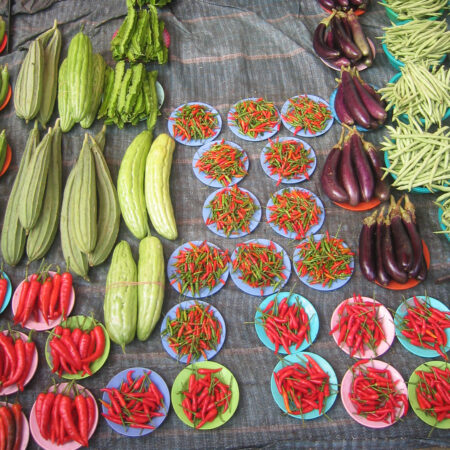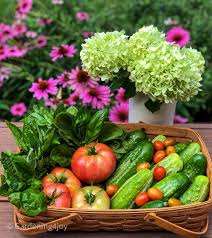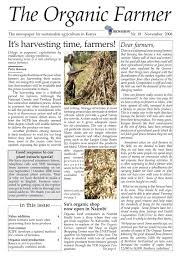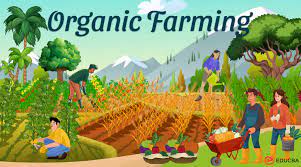
Organic farming techniques prioritize sustainable and eco-friendly practices to cultivate crops without synthetic chemicals or genetically modified organisms (GMOs). Farmers rely on natural methods such as crop rotation, composting, and biological pest control to maintain soil fertility and manage pests. These techniques promote biodiversity, reduce environmental impact, and produce nutritious food while preserving the health of ecosystems. Organic farmers also emphasize the importance of soil health, using cover crops and organic fertilizers to enrich soil structure and fertility naturally. Overall, organic farming techniques aim to create a balanced, resilient agricultural system that benefits both consumers and the environment.

Organic farming techniques encompass a holistic approach to agriculture that prioritizes sustainability, biodiversity, and environmental stewardship. In contrast to conventional farming methods reliant on synthetic pesticides and fertilizers, organic farming aims to cultivate crops and raise livestock in harmony with nature, minimizing the use of external inputs and maximizing natural processes. This paragraph explores the fundamental principles and diverse practices of organic farming, highlighting its benefits and challenges in the context of modern agriculture.
At the core of organic farming techniques lies a commitment to soil health and fertility. Organic farmers employ various methods to nurture and enhance soil quality without synthetic chemicals. Crop rotation is a fundamental practice where different crops are planted sequentially in the same field, helping to break pest cycles, improve soil structure, and prevent nutrient depletion. Leguminous cover crops like clover or peas are often used to fix nitrogen from the air into the soil, reducing the need for synthetic fertilizers and enhancing soil fertility naturally. Composting organic matter such as crop residues, animal manure, and kitchen scraps further enriches soil nutrients and promotes microbial activity, fostering a resilient and productive growing environment.
In addition to soil management, organic farming emphasizes the use of biological pest control methods to manage insects, diseases, and weeds. Integrated Pest Management (IPM) strategies integrate biological, cultural, and mechanical control tactics to minimize pest damage while reducing reliance on chemical pesticides. This approach includes deploying beneficial insects, like ladybugs or predatory mites, to control pest populations naturally. Mulching and hand weeding are also common practices to suppress weeds and maintain weed-free fields without herbicides.
Water conservation and efficient resource use are critical components of organic farming techniques. Practices such as drip irrigation, rainwater harvesting, and soil mulching help optimize water use and minimize runoff, contributing to sustainable water management. By enhancing soil structure and organic matter content, organic farming also improves water retention capacity, ensuring crops have access to adequate moisture even during dry periods.
Promoting biodiversity is another hallmark of organic farming systems. By avoiding synthetic chemicals that can harm beneficial organisms and pollinators, organic farmers create habitats that support diverse wildlife and insect populations. Hedgerows, buffer zones, and native plantings provide refuge and food sources for beneficial insects and birds, contributing to ecological balance and resilience within agricultural landscapes.
Certification plays a crucial role in verifying adherence to organic farming principles and practices. Organic certification standards, established by governmental or independent organizations, set guidelines for soil management, pest control, livestock care, and the use of inputs like seeds and fertilizers. Farmers seeking organic certification must comply with these standards, undergo periodic inspections, and maintain detailed records to ensure transparency and accountability in their farming practices.
Transitioning to organic farming presents both opportunities and challenges for farmers. While organic crops often command premium prices in the market due to consumer demand for sustainably produced food, the initial transition period can be financially and logistically demanding. Farmers may face higher labor costs for weed management and pest control, as well as potential yield fluctuations during the transition from conventional to organic practices. However, over time, organic farming systems typically demonstrate resilience and profitability, particularly as soil health improves, input costs decrease, and market demand for organic products continues to grow.
Consumer awareness and support for organic agriculture have driven the expansion of organic farming worldwide. Consumers choose organic products for their perceived health benefits, environmental sustainability, and ethical considerations. The organic label assures consumers that products were produced using environmentally friendly practices, without synthetic pesticides, genetically modified organisms (GMOs), or antibiotics in livestock production. This consumer demand has spurred the growth of organic farming across diverse agricultural sectors, including fruits, vegetables, grains, dairy, and livestock production.
In conclusion, organic farming techniques represent a sustainable alternative to conventional agriculture, emphasizing soil health, biodiversity, and resource efficiency. By integrating natural processes and reducing reliance on synthetic inputs, organic farmers contribute to environmental conservation, promote healthier ecosystems, and provide consumers with nutritious and ethically produced food. While challenges such as initial transition costs and market variability exist, the long-term benefits of organic farming for soil fertility, biodiversity, and human health underscore its importance in shaping a more sustainable agricultural future









